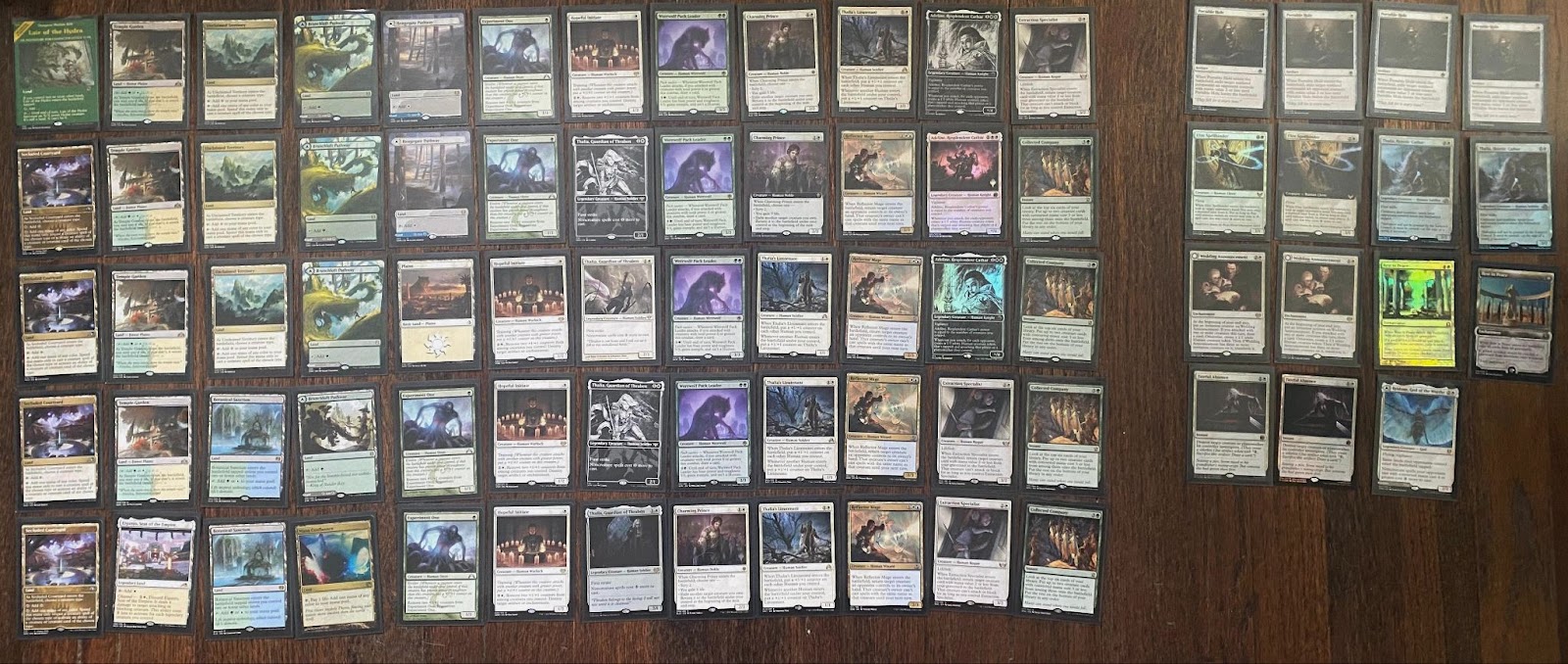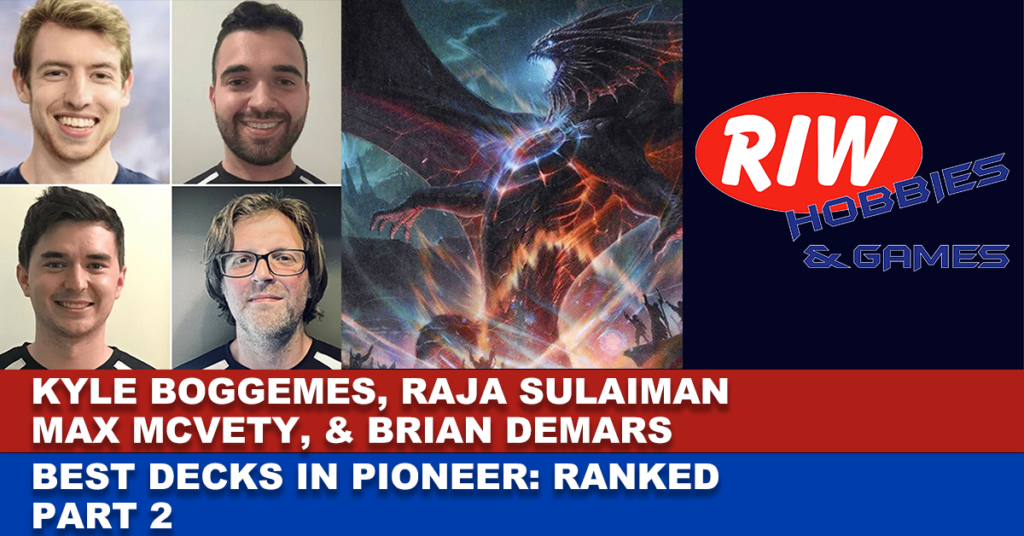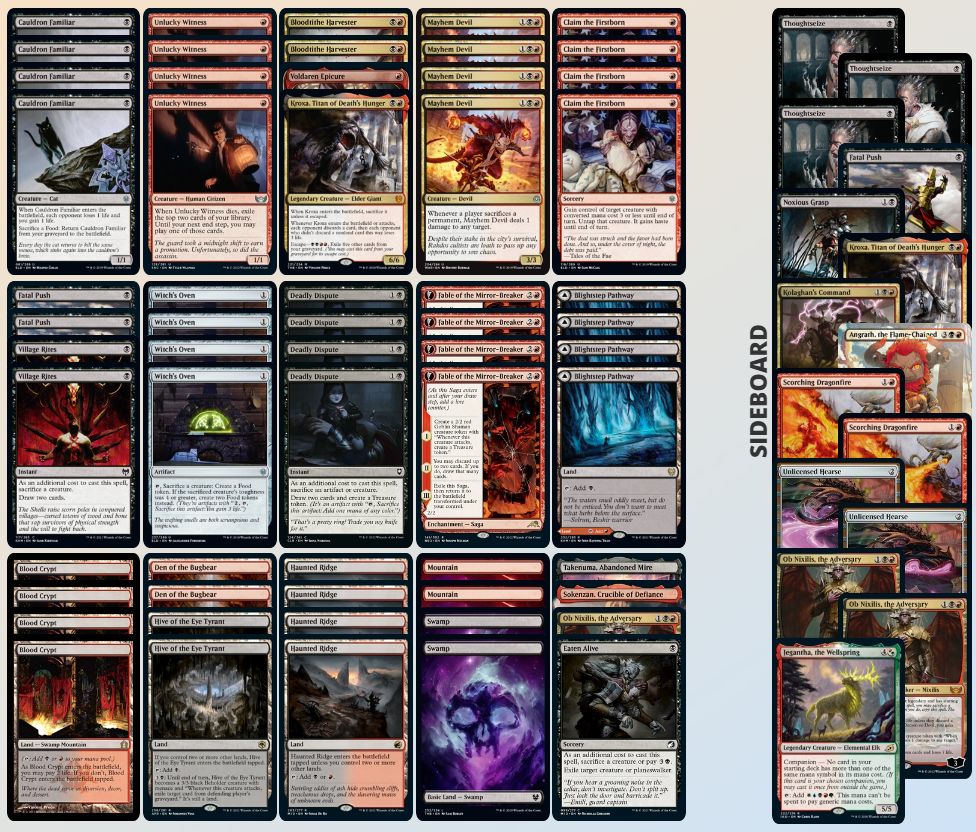As we continue through tier 2.5 and onto tier 2.0 (if you’d like a recap of how we got here be sure to check out part 1: I’d like to reemphasize that all of the Top 15 decks serve a role in the meta even if some (tier 1) tend to be more popular, well-positioned, and thus more successful than others (tier 2.0+). https://riwhobbies.com/best-decks-in-pioneer-ranked-part-1/
Plenty of RCQ invites have been gobbled up by the tier 2.0 and 2.5 decks in our metagame countdown. Also of note, plenty of lower tier decks boast positive matchups against higher tiered decks which often makes them a sneaky good choice for high-level tournament play.
Whereas formats tend to have generic best decks and tiers, it’s also true that individual tournaments often have the right deck to be played that day.
There are various ways to build Greasefang, but all versions center on a combo:
Black and white are a given, but the community has tried blue, green, and red to increase its power. Green is currently the favored third color:
Satyr Wayfinder and Grisly Salvage dump plenty of cards into the graveyard to assemble your combo of Greasefang and Parhelion.
Thanks to Can’t Stay Away, adding Greasefang to the graveyard helps enable a quick combo kill. In fact, Kyle lost two times to an effective second turn kill involving Can’t Stay Away and Stitcher’s Supplier at a recent RCQ.
A drawback of Greasefang is the power level is predicated on actually finding the rat and Parhelion. Esika’s Chariot does offer an additional layer of redundancy as a powerful vehicle that can also be hard cast.
Abzan Greasefang is a glass cannon in the first game, but able to pivot after sideboarding. When the opponent brings in popular cards, such as Unlicensed Hearse and Rending Volley, Greasefang can cast powerful midrange threats as well as represent a combo kill if the opponent ever lets their guard down.
With great power comes lesser consistency…. We can’t say this deck kills an opponent quickly at a consistent clip because if it did it would be the best deck in the format by a large margin. It executes a powerful game plan at a fair but inconsistent rate. It’s a solid choice if you like Splinter Twin-esque strategies.
When Mono-Green Ramp first came to prominence in Pioneer, Mono-Blue Spirits also rose to the top as a natural predator of Mono-Green. As the format settled down, Mono-Blue Spirits has stuck around as a solid option if playing a tricky tempo oriented deck is your preferred play style.
The ideal game plan is to stick an early Curious Obsession and ride it to victory, countering whatever removal or relevant creatures your opponent puts in your way; but, Magic doesn’t always work out the way you plan and sometimes your early threat dies.
In these types of games, you often have to work hard to slow down your opponent with counter spells and Shacklegeist getting in for chip damage. These games are tough to win but a skilled pilot can find the line and make it look effortless.
Mono Blue has polarizing matchups; its best matchups are lopsided favorable and its bad matchups are quite hard. Mono Green Ramp, Abzan Greasefang, and Azorius Control are what we want to be sitting down against. Aggro decks and interactive decks can be tough, but it’s easy to make a mistake on the opposing side as Mono-blue can represent a lot of different tricks.
As we edge closer to #1 we’re bumping up to the top of the Tier 2 decks. The biggest difference between the Tier 2.5 and 2.0 is that we find the match ups tend to be less polarized in terms of being “good” or “bad” and tend to be closer to the middle.
The biggest selling point of Boros Heroic is it’s extremely good against Mono Green; a green mage will usually just die to a turn two virtuoso.
Illuminator Virtuoso’s printing really helped the deck, allowing a player to kill out of nowhere when he or she untaps with one in play.
Heroic is usually comfortable exposing its first one or two creatures to removal and then once the opponent is softened up a bit, just stick a threat with God’s Willing back up and ride it to victory.
Homestead Courage pairs great with Virtuoso as we want to discard nonland cards to grow it, so the flashback ability is quite important. Invigorated Rampage plus Virtuoso is basically Splinter Twin. Hyperbole? Maybe.
Reckless Rage on a Deathorde Arcanist is difficult for creature decks to overcome as it essentially functions as removal and card draw / advantage.
While Boros Heroic does tend to fare well against creature decks like Mono Green, it typically struggles against control decks like UW, since it can’t protect its creatures from wrath effects like Supreme Verdict.
Collected Company is one of the most powerful cards in Pioneer, it just comes with some constraints for how you must build your deck and adds some luck factor since you’ll never know what you’ll get when you spin the wheel.
Bant Humans is likely the strongest Collected Company deck in the format, with powerful hits for CoCo such as Extraction Specialist, Thalia’s Lieutenant, and Reflector Mage. All classics!
It also can’t be understated how well Thalia, Guardian of Thraben lines up against the top decks in Pioneer right now. Check out Max Mcvety’s Bant Humans article for a detailed breakdown of the deck and RCQ winning decklist: https://riwhobbies.com/pioneer-bant-humans-tech/

Max Mcvety’s Bant Humans Deck
In Chess, knowing when to sacrifice a game piece is an important aspect of strategy, and in Magic the same is often true. When playing RB Sacrifice… it’s always true!
RB Sacrifice treats each game piece as dispensable. The goal is to sacrifice creatures and tokens for benefit. This is accomplished by playing cheap creatures with ETB triggers, death triggers, or recursive abilities. The most persistent example of this is Throne of Eldraine’s pairing of Cauldron Familiar and Witch’s Oven.
Mayhem Devil is the most threatening card in the deck. If not answered immediately, it can often decimate the opposing board or deal large amounts of damage to the opponent.
Claim the First Born steals opposing cards only to sacrifice them to your effects. It can also give your own creature haste when needed.
Deadly Dispute and Village Rites provide card draw while enabling the deck’s best synergies. It also protects your cards from exile based removal.
Ob Nixilis, The Adversary’s recent printing gave the deck an added dimension of attack. Having this come down as two Planeswalkers is not only easy, it’s encouraged. From there it continues to create sacrificial fodder and pressure on your opponent’s life total.
While R/B tends to be the best performing and most popular variant of the deck, Jund builds have also had some success in Pioneer.
Korvold, the Fae-Cursed is a pretty exciting and synergistic Dragon in a Sacrifice themed deck to ramp out with Gilded Goose.
And that rounds out the Tier 2.0 decks of Pioneer….
Check back on FRIDAY as we delve into the Tier 1 decks of the Pioneer metagame here at RIWHobbies.com!




























































































































































